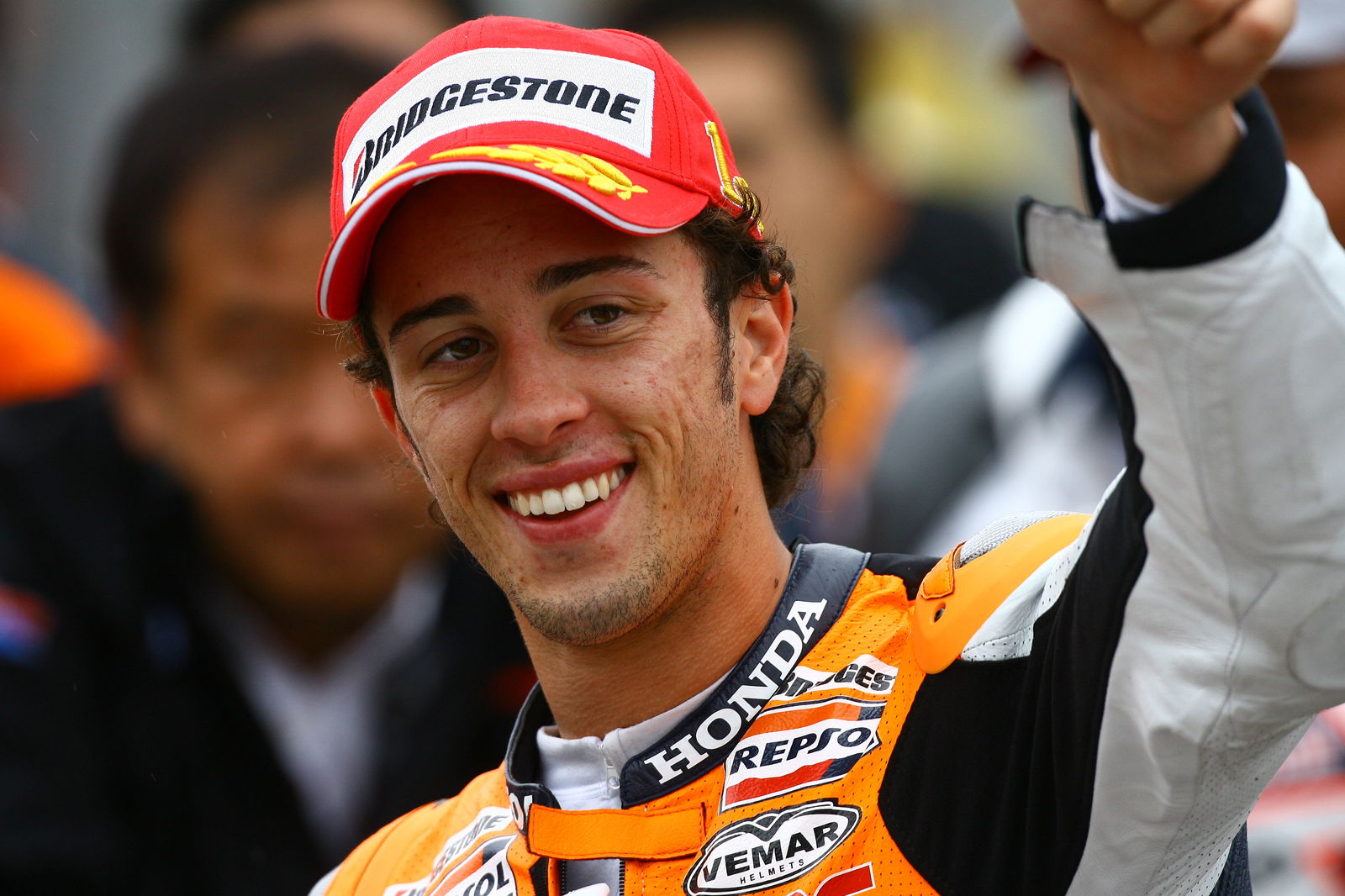MotoGP rule changes.
During a meeting at last weekend's British Grand Prix at Donington Park, the Grand Prix Commission clarified the rules regarding rookie riders and engine limits, amongst other decisions.
MotoGP rookies will not be able to join a factory team from 2010 (except Suzuki, which has no satellite team) and a precise definition of a 'rookie' was therefore needed to avoid, for example, teams claiming that a rider was not rookie because he had already made some grand prix starts as a wild-card.

During a meeting at last weekend's British Grand Prix at Donington Park, the Grand Prix Commission clarified the rules regarding rookie riders and engine limits, amongst other decisions.
MotoGP rookies will not be able to join a factory team from 2010 (except Suzuki, which has no satellite team) and a precise definition of a 'rookie' was therefore needed to avoid, for example, teams claiming that a rider was not rookie because he had already made some grand prix starts as a wild-card.
To help clear up the situation, the Commission has given the following definitions of new 'rookie' rider and a 'contracted' rider:
"A contracted rider is a rider who has participated in nine or more events during one season.
"A "Rookie" is a rider nominated by a participating team for participation in the entire season, who has not been a contracted rider as defined above in the same class in any previous season."
In other words, a 'rookie' only becomes a 'contracted' rider after nine races in the same season... but does that mean that a 'rookie' rider at the start of next season can then swap to a factory team after nine rounds?
While the rookie rule won't come into effect until 2010, the new rule on engine limits will begin from the forthcoming Czech Republic Grand Prix, at Brno on August 16.
The new rules are designed to limit maintenance and running costs through longer engine life, with a points penalty for any extra engine changes.
The full technical regulations for the new 'Engine Durability' rule are as follows:
1.) In the MotoGP class the number of engines available for use by each rider is limited. For the 2009 season a maximum of 5 engines may be used by each rider for the final 7 scheduled races of the season, that is from and including the Czech Grand Prix until the end of the season. Should a rider be replaced for any reason, the replacement rider will be deemed to be the original rider for purposes of engine allocation.
2.) The engines available for the exclusive use of each rider must be marked and sealed by the Technical Director prior to first use. It is the Team's obligation to register any new engine with the Technical Director prior to use. Once registered and used for the first time, engines may not be swapped between riders, even within the same team. A new engine is deemed to be used when the motorcycle with that engine crosses the transponder timing point at the pitlane exit.
3.) The engines will be sealed by means of wiring and identification tabs, so that:
a. the timing system is not accessible (e.g. the head cover must be wired to the cylinder head)
b. the timing driving system is not accessible (e.g. the geartrain/chain cover is wired so that it cannot be removed),
c. the cylinder head and the cylinders block (if any) cannot be removed from the engine (e.g. the cylinder head is wired to the cylinders block and the cylinders block is wired to the engine crankcase),
d. the crankcase cannot be opened (e.g. the crankcase halves are wired together).
All the parts that are accessible without removing the sealing wiring can be replaced. Breaking or removing the sealing wiring without supervision by the Technical Director will be deemed to be "engine rebuilding" and engines with broken or missing security seals will be treated as a new engine in the allocation.
4.) Should a competitor, for any reason (e.g. mechanical failure, crash, major damage, etc.) require the use of another engine above their allocation, the Technical Director must be informed before the new engine is used, and Race Direction will apply the appropriate penalty.
The damaged engine will be removed from the allocation and if it is used again, it will be treated as a new engine with the appropriate penalty.
5.) There is no limit to the number of times a sealed, allocated engine can be fitted to and used in a motorcycle, provided the security seal is not broken or removed. Replacing an engine with another sealed engine (new or used) from the rider's allocation is allowed with no penalty.
6.) To prevent the running of a used, allocated engine outside of MotoGP events, all allocated engines will have security seals placed over either exhaust or inlet ports (on at least one cylinder bank, in the case of V-type engines) before leaving the circuit. Teams wishing to re-use such an allocated and sealed engine must request the Technical Director to remove the security seals. If the Technical Director or his staff find that the security seals are not intact, the engine will be deemed to be a new engine in the allocation, with the appropriate penalty.
Earlier this year, the Grand Prix Commission announced that "The penalty for using an unauthorized engine will be a deduction of 10 points from... the Championship ranking of the rider concerned".


